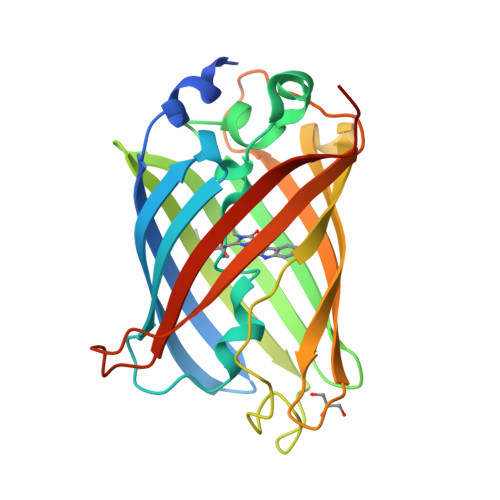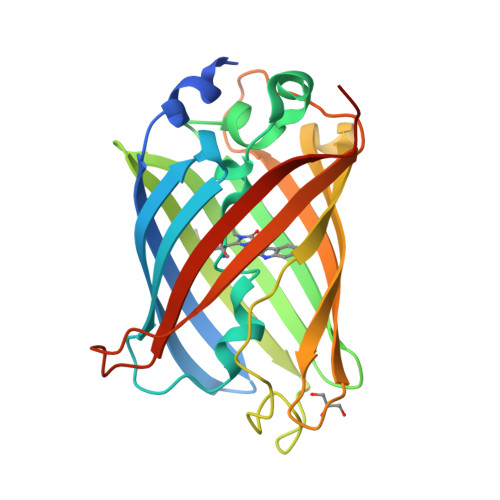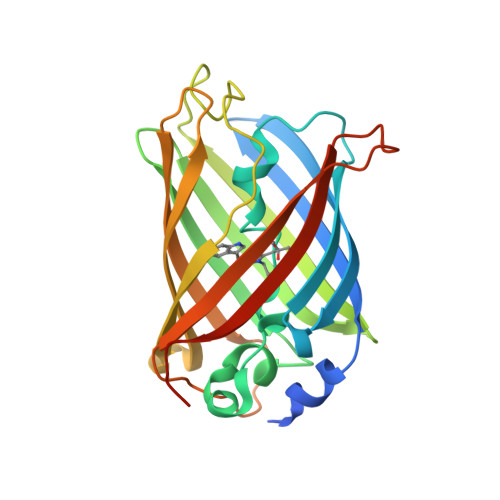Structure of the green fluorescent protein NowGFP with an anionic tryptophan-based chromophore.
Pletnev, V.Z., Pletneva, N.V., Sarkisyan, K.S., Mishin, A.S., Lukyanov, K.A., Goryacheva, E.A., Ziganshin, R.H., Dauter, Z., Pletnev, S.(2015) Acta Crystallogr D Biol Crystallogr 71: 1699-1707
- PubMed: 26249350
- DOI: https://doi.org/10.1107/S1399004715010159
- Primary Citation of Related Structures:
4RTC, 4RYS, 4RYW - PubMed Abstract:
A green-emitting fluorescent variant, NowGFP, with a tryptophan-based chromophore (Thr65-Trp66-Gly67) was recently developed from the cyan mCerulean by introducing 18 point mutations. NowGFP is characterized by bright green fluorescence at physiological and higher pH and by weak cyan fluorescence at low pH. Illumination with blue light induces irreversible photoconversion of NowGFP from a green-emitting to a cyan-emitting form. Here, the X-ray structures of intact NowGFP at pH 9.0 and pH 4.8 and of its photoconverted variant, NowGFP_conv, are reported at 1.35, 1.18 and 2.5 Å resolution, respectively. The structure of NowGFP at pH 9.0 suggests the anionic state of Trp66 of the chromophore to be the primary cause of its green fluorescence. At both examined pH values Trp66 predominantly adopted a cis conformation; only ∼ 20% of the trans conformation was observed at pH 4.8. It was shown that Lys61, which adopts two distinct pH-dependent conformations, is a key residue playing a central role in chromophore ionization. At high pH the side chain of Lys61 forms two hydrogen bonds, one to the indole N atom of Trp66 and the other to the carboxyl group of the catalytic Glu222, enabling an indirect noncovalent connection between them that in turn promotes Trp66 deprotonation. At low pH, the side chain of Lys61 is directed away from Trp66 and forms a hydrogen bond to Gln207. It has been shown that photoconversion of NowGFP is accompanied by decomposition of Lys61, with a predominant cleavage of its side chain at the C(γ)-C(δ) bond. Lys61, Glu222, Thr203 and Ser205 form a local hydrogen-bond network connected to the indole ring of the chromophore Trp66; mutation of any of these residues dramatically affects the spectral properties of NowGFP. On the other hand, an Ala150Val replacement in the vicinity of the chromophore indole ring resulted in a new advanced variant with a 2.5-fold improved photostability.
Organizational Affiliation:
Shemyakin-Ovchinnikov Institute of Bioorganic Chemistry, Russian Academy of Sciences, GSP-7, Moscow, Russian Federation.


















